Synonym: Trochanteric prominence angle test Patient position: Prone with knee on test side flexed to 90 degrees Test procedure: Examiner palpates the greater trochanter and internally and externally rotates the hip until the greater trochanter lies at the lateral most aspect of the hip (the greater trochanter is parallel to…
Tag: Orthopedics
Section Editor: Dr. Sulabh Kumar Shrestha, MBBS, PGY1 Orthopedics

Wrist Extensor Compartments
The Extensor Zone VII (wrist) contains 6 extensor compartments comprising of 6 synovial sheath lined tunnels separated from each other by fibrous sheath. These compartments contain tendons of muscles that pass from forearm to hand. The number of tendons passinf thorugh the compartments (radial to ulnar) can be remembered using…
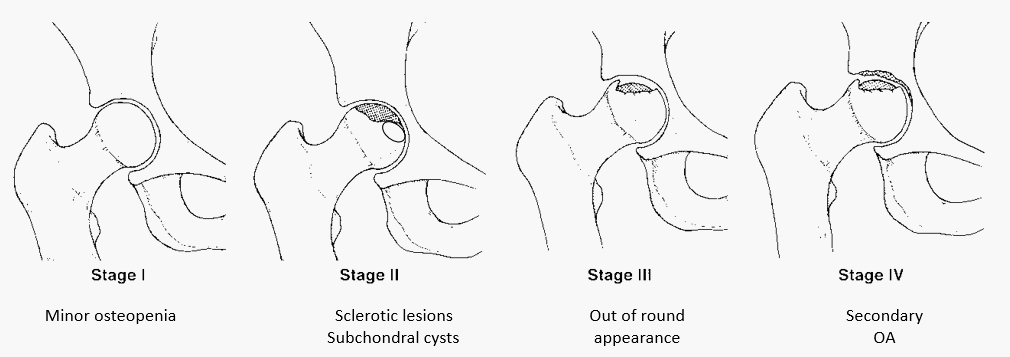
Modified Ficat-Arlet Staging for AVN hip : Mnemonic
Ficat and Arlet first classified avascular necrosis of femoral head (AVN) in 1964 before the advent of MRI which was later modified and published in 1985 to include pre-radiographic stages relying on invasive testing procedures. The classification system later underwent further modifications that include MRI findings, patient symptoms and modifies…

Synovial Fluid Analysis – Made Easy
What investigations to order for synovial fluid sample? Mnemonic: 5 Cs Chemistry (pH, LDH, glucose, protein) Cell counts Cytology Culture Crystals Interpretation of synovial fluid analysis Gross Normal Non-inflammatory Inflammatory Septic Crystal Hemorrhagic Volume (ml) <3.5 >3.5 >3.5 >3.5 >3.5 >3.5 Viscosity High High Low Variable Variable Variable Color Colorless…
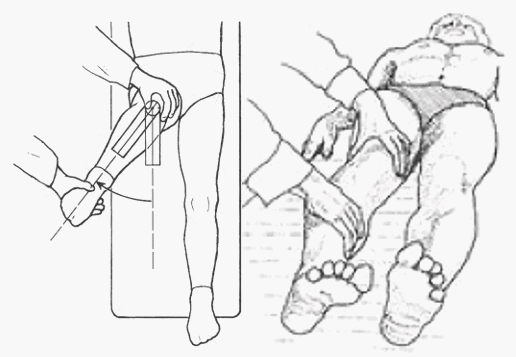
Sectoral Sign : AVN hip
The rotation of the hip must be assessed both with the hip in flexion and extension as well. In general, the range of motion for rotations are 5 to 10 degrees more in flexion compared to that in extension of hip. If the range of motion for rotation varies between…
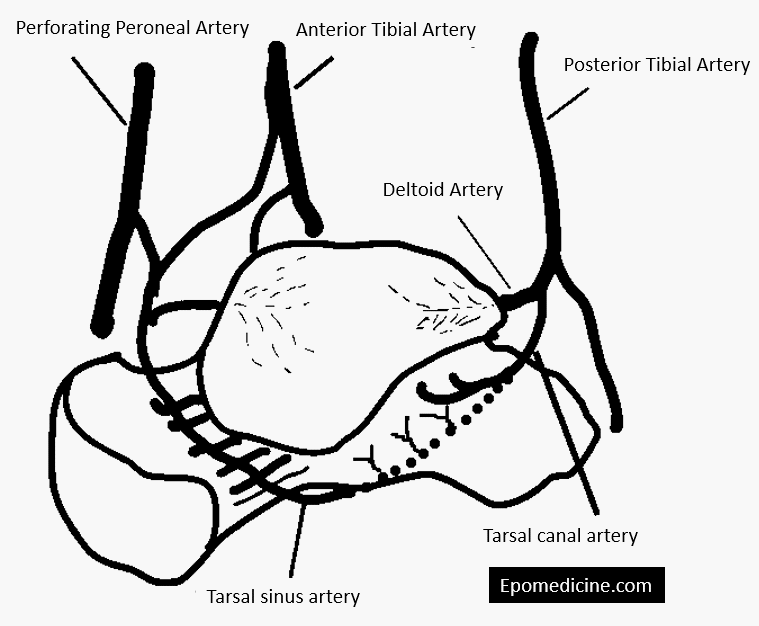
Blood Supply of Talus
3 Main Arteries Extraosseous and intraosseous anastomoses formed by 3 main arteries: Posterior tibial artery ~ 17% contribution Anterior tibial (dorsalis pedis) artery ~ 36% contribution Perforating peroneal artery ~ 47% contribution Major Branches Tarsal sinus artery: Arises from – Dorsalis pedis artery (frequently) or Lateral tarsal artery (branch of…
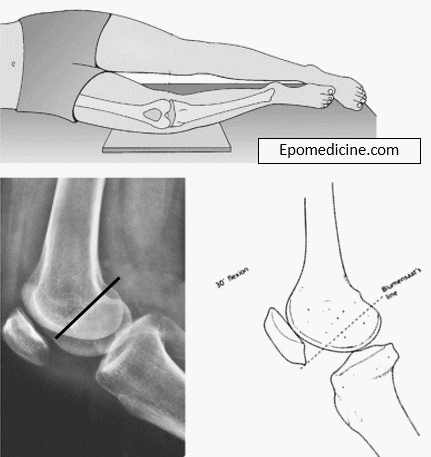
Blumensaat line
Synonym: Intercondylar line, Blumensaat’s line Definition of Blumnesaat line It is the tangent drawn along the roof of intercondylar notch or fossa of the distal femur on the saggital or lateral view. Morphologic variations of Blumensaat line (Iriuchishima’s classification) Straight type (35%): appear more or less straight Small hill type…
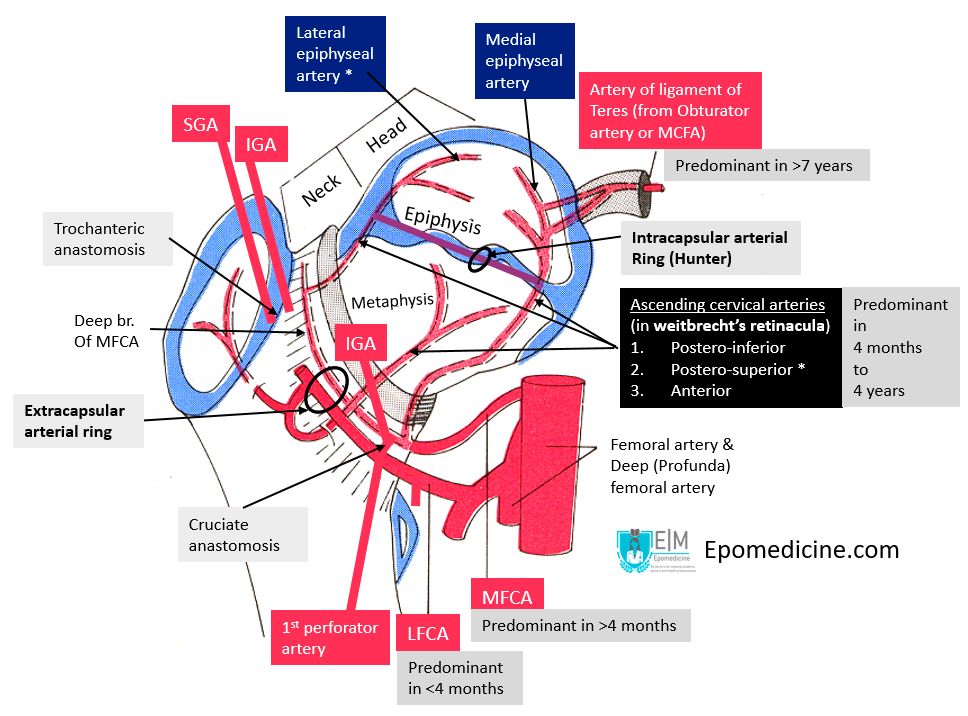
Blood supply of femoral head
Three sources of Blood supply Vascular arragement of Proximal Femur a. Extracapsular ring (At the base of femoral neck) These circumflex femoral arteries branch from: Trochanteric anastomosis (centered on trochanteric fossa): Descending branch of SGA + ascending branch of LFCA, MFCA and IGA Cruciate anastomosis (centered on lesser trochanter): Descending…
